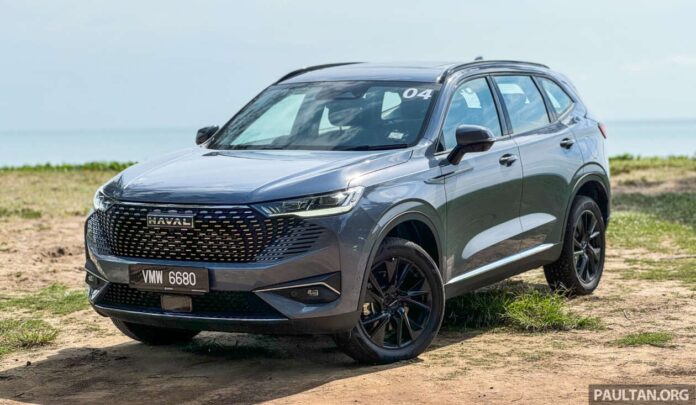It is a rare sight for a corporation to act out of sheer benevolence, and rarer still when that corporation operates in the fiercely competitive, tightly regulated, and cash-strapped confines of Pakistan’s auto industry.
In a market where margins are thin, customer bases are limited, and price sensitivity is razor-sharp, altruism tends to take a back seat to survival. So, when Sazgar Engineering proudly announced that it would keep prices unchanged for its Haval lineup despite the post-budget tax shock, it was marketed as a gesture of goodwill. However, beneath the surface of the PR glitter, it is clear as day that this was not charity—it was chess. With Hyundai undercutting the market through aggressive pricing on the new Tucson, and Kia forced to follow suit, Sazgar found itself on the defensive. The only move left was to hold ground—freeze prices not to pamper the consumer, but to preserve market relevance.
The chess of SUV-pricing
Earlier this year when the 2025 Haval H6 facelift was announced in all the three variants, namely the 1.5T, the 2.0T and the H6 HEV, the company did not give it a price bump over the previous price, despite the car boasting a redesigned grill, LEDs, 14.6″ touchscreen, upgraded steering wheel, hybrid engine etc. The market hailed this as a highly altruistic decision lauding Haval for being considerate unlike other companies. But when the bar has been in the gutter in an industry for so many years, anything can be spun off as a relief for the consumer.
But the question remains, why did Sazgar not raise the prices? Sazgar Engineering’s decision to maintain ex-factory prices for the facelifted Haval H6 wasn’t a gift—it was a calculated competitive move.
Because at the time, rival Hyundai had just launched the new Tucson aggressively priced, undercutting competition with one clean sweep.
This forced Kia to respond with a price cut. In this war, Haval couldn’t risk losing share therefore it had to keep its price the same and therefore somewhat competitive. Meanwhile Haval’s premium hybrid variant the Haval H6 HEV was already a price outlier, a car priced at Rs 11.7 million, higher than the competition, making relative positioning critical.
In fact, a lot of consumers believed that the Haval H6 2.0T, was also slightly overpriced at around Rs 10.5 million being a non-hybrid vehicle. Making only the Haval 1.5T, priced at just under Rs. 9.1 million, a competitive option.
Another reason why Sazgar did not reduce its prices was that reducing a car’s price often comes with the added weight of perception and future expectation. Perception, while not such a big motivator for globally established brands like KIA, is the trump card for a novel brand like Haval. Had Sazgar reduced its price at the time, not only would it have harmed its perception but also the trust of its existing costumers.
A price decrease means an even higher fall in value in the secondary market, i.e; the used car market. In a country like Pakistan where a car is often times (though fallaciously) bought as a store of value, a fall in a car’s “resale value” creates a domino affect for that company’s brand value. So in introducing the newer model in the same price, Sazgar essentially cashed the opportunity to decrease its price without effectively having to decrease its prices at all.
The move worked, in May 2025, right after the facelift launch, the company’s four-wheeler sales went up by 67%, to 919 units and in June, the company saw yet another 47% increase taking its monthly sales to over 1300 units.
Why no hike now?
But after absorbing the shock once, one would believe that the company would increase the prices now, as the government rolls out the NEV (New Energy Vehicle) Adoption Levy Act, 2025—effectively introducing fresh taxes on vehicles. Yet this is where the game of chess really starts for Sazgar.
As the tax was announced Kia was the first to react, promptly raising prices and passing the burden directly onto consumers, since it had already been too reactive to Tuscon’s price in April. Hyundai, though still silent, is widely expected to follow suit given the mounting cost pressures and thinning margins in an already saturated and competitive C-SUV segment.
Haval, however, has chosen the same unorthodox route. Rather than hike prices, Sazgar—the local assembler of Haval vehicles—has strategically held prices steady, employing, once again, the same strategy it did when introducing the facelift.
In doing so, it has seized this unique moment to reposition its lineup. The move gives the hybrid and 2.0T variants a newfound price advantage relative to the competition, while turning the facelifted 1.5T into perhaps the most value-packed budget C-segment SUV in the market.
With a single, calculated step, Sazgar has effectively turned the tables—forcing pricing teams at Hyundai Nishat and Kia Lucky to return to the drawing board. For now, the pricing war has a new frontrunner.
It also reinforces one’s belief that in auto‑retail, maintaining prices amid rising costs isn’t benevolence—it’s business warfare disguised as consumer kindness and anyone who lags behind, might possibly stay behind for a while.




